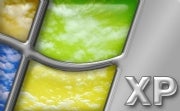On the heels of the launch of Windows 8′s preview, new statistics show that Microsoft’s decade-old Windows XP again plummeted in usage share and will be surpassed by Windows 7 in June.
 According to Internet metrics firm Net Applications, Windows XP lost 1.8 percentage points last month to drop to a 45.4 percent share. The decline was the largest since December 2011, and the fourth time in the last 12 months that the aged OS lost around two points of share.
According to Internet metrics firm Net Applications, Windows XP lost 1.8 percentage points last month to drop to a 45.4 percent share. The decline was the largest since December 2011, and the fourth time in the last 12 months that the aged OS lost around two points of share.
Windows XP also reached a milestone in February, for the first time accounting for less than half of all machines running Windows. Of the PCs powered by Windows, 49.4 percent of them ran XP.
Meanwhile, Windows 7 continued its charge, gaining 1.7 percentage points to end February with 38.1 percent of the desktop operating system usage share.
 Assuming their paces hold steady, Windows 7 will take the top spot from XP in June, and has an outside shot of doing so in May.
Assuming their paces hold steady, Windows 7 will take the top spot from XP in June, and has an outside shot of doing so in May.
It couldn’t come too soon for Microsoft, which has been reminding customers that XP will stop receiving security updates in April 2014, and aggressively pushing Windows 7 as the next logical move.
Microsoft’s problem-plagued Vista — the 2007 edition that never managed to capture more than 20 percent of the market — lost about one-tenth of a percentage point, dropping to 8.1 percent.
Windows overall share receded slightly to 91.9 percent, the fourth straight month that the operating system has grown share, stayed flat or lost less than two-tenths of a percentage point. The last time Windows dropped by more than half a percentage point was October 2011.
The Wednesday release of Windows 8 Consumer Preview will not immediately affect share numbers — it’s not expected to ship until this fall — but if the radically-revamped OS catches on, it could mean the end of Windows 7′s climb.
Vista, for example, peaked the same month that Microsoft launched Windows 7 and has been sliding ever since.
Windows XP users will be able to upgrade to Windows 8, assuming their PCs meet the low-level system requirements of the latter: a 1GHz processor and 1GB of RAM. Most analysts, however, expect XP owners, especially businesses that still rely on the old OS, to migrate to Windows 7 rather than that edition’s touch-centric successor.
During February, only 0.02 percent — or two PCs out of every 10,000 — ran Windows 8 Developer Preview, the September 2011 edition that Microsoft opened to all comers.
 The next few months will show whether users are trying out Windows 8, and possibly predict its future adoption.
The next few months will show whether users are trying out Windows 8, and possibly predict its future adoption.
Three years ago when Microsoft delivered the public beta of Windows 7, that OS’s share jumped to 0.2 percent the month after the preview’s debut, and reached half a percentage point within four months. By the time Windows 7 shipped in October 2009, it had acquired a respectable 2.2 percent share.
The beta of Windows Vista was adopted by far fewer users, and the edition accounted for just 0.9 percent of all operating systems the month after it shipped. Vista didn’t reach Windows 7′s launch-month performance until a month and a half later.
If Windows 8′s pre-release adoption rate is on Vista’s scale Microsoft might be in trouble. However, if the Consumer Preview’s usage share quickly climbs, the company may have another hit on its hands.
Lion Gains Share
Like Windows 7, Apple’s Mac OS X gained ground in February, growing its share by more than half a percentage point and ending the month with 6.9 percent of the usage market. It was the Mac operating system’s biggest one-month increase in Net Applications’ tracking history, and put Apple within spitting distance of its October 2011 record amount of usage share.

Among Macs, OS X 10.7, aka Lion, again boosted its share; in February, the mid-2011 edition accounted for 38.9 percent of all Apple desktop operating systems in use.
Snow Leopard, or OS X 10.6, retained its lead over Lion, however. The 2009 version powered 43.4% of all Mac desktops and notebooks.
Apple has also announced a 2012 operating system upgrade, dubbed OS X Mountain Lion, that it will deliver in late summer. If experts are right, and Apple offers aMountain Lion upgrade free of charge to some Mac users, that edition’s share could climb much faster than either past for-a-fee OS X versions or even Windows 8.
Net Applications calculates operating system usage share with data obtained from more than 160 million unique visitors who browse 40,000 Web sites that the company monitors. More OS share data can be found on the company’s site.
No comments:
Post a Comment